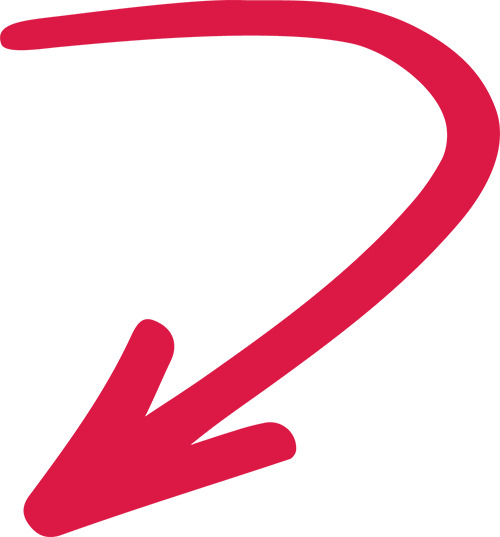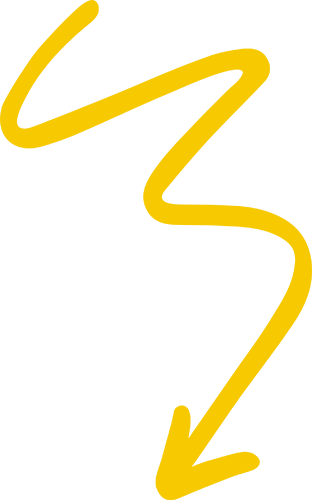Welcome to Learn More Indiana, your guide to the future. Maybe you have an idea of your college and career goals. Maybe you’re still exploring your options. No matter what, Learn More Indiana can help you plan your next steps.
In this digital magazine, you’ll learn about:
Your path to success starts now, and that means taking the right steps to prepare yourself for life after high school. Try your hardest every day and ask for help when you need it. Look through this website to start learning about how you can reach your goals.
After you finish this digital magazine, talk to your family and teachers about your goals, and check in regularly so they can help you succeed.
Have a great school year!

Get involved. Participate in extracurricular activities like sports or a club, or volunteer in your community. You’ll gain new skills, meet new people, and have fun doing it.
Start your high school graduation plan. Start thinking about the kind of classes you hope to take.
Take a career interests quiz and start exploring career options. Check out a short quiz at Indiana Career Explorer.
This website will help you plan for the future. What you enjoy, what your strengths are, and what skills you want to develop are all good places to start. It’s okay to not have all the answers for your future, and most people change their minds about what they want to do for a career.
Take your time and think carefully about the following questions before reading through the rest of the website.


This cluster produces, markets, and develops agricultural products and resources including food, fiber, and wood. If you’re interested in farming, food, or animals, this is the career cluster for you.

This cluster works with human needs like counseling and mental health, family and community services, and personal care. If you’re interested in helping people, this is the career cluster for you.

This cluster designs, develops, and supports hardware, software, and multimedia. If you’re interested in technology and working with computers, this is the career cluster for you.


This cluster plans, manages, and performs marketing activities like designing advertisements and researching consumer behavior. If you’re interested in selling things or talking to people, this is the career cluster for you.

Did you know that the average American spends about 90,000 hours at work over their lifetime? That’s more than 10 years, so you want to find a career you enjoy! Start thinking about your personality, hobbies, and interests. How can you combine these to find a job?
Do you like to build things, play sports, or draw? What’s your favorite class? When you stop and think about what makes you happy, you can think about finding the career that fits you.
FALSE. According to the Bureau of Labor Statistics, the average person changes jobs about 12 times during their lifetime! Your first job won’t be your last, and you’ll keep learning new skills throughout your entire career.
FALSE. About 99% of all new jobs created since the Great Recession require education and training beyond high school, but that doesn’t mean you have to get a four-year degree. There are a lot of other options to choose from to set yourself up for success!
TRUE. As you get older, your career will change. Maybe you’ll major in marketing and end up starting a tech company. The good news is, the longer you work the more you’ll learn, so you’ll be ready when you decide to take on new responsibilities.


When little kids think about what they want to be when they grow up, they think in a direct way: if I’m good at math, I should be a banker or accountant!
In the real world, skills are applicable in a range of fields. Electrical engineers have become journalists; police officers have become politicians; music majors have become CEOs. Most people change careers several times in their lives. As you chase your goals, remember that you’ve got skills that can be applied in many ways.
Select an interest/strength and an industry you are interested in to see what careers could be right for you.


An opportunity to sit down with a professional and ask them questions. You can ask about their educational path, what their job is like, what they like (and don’t like) about it, what advice they have for you, and more.
Following a professional for a day to see what they do. You can make the most of job shadowing by asking questions (like you would during an informational interview) during your visit.

Your education belongs to you. No one can take it away. It’ll earn you more money, too. According to the Indiana Commission for Higher Education, students who earn a bachelor’s degree make on average over $40,000 more each year than someone with only a high school diploma.

Consider this: Living in Indiana, you’ll want to make at least $40,000 a year to cover living expenses and have some spending money. To get a job that pays at least that much (about $20 an hour) you’ll most likely need some education beyond high school.



To graduate from high school in Indiana, you will need to show you are ready for college or a career to earn your high school diploma. Indiana’s Graduation Pathways are designed to help you meet state requirements while still giving you options to pursue what interests you.
Here’s a look at what the Graduation Pathways requirements are to get you thinking about
what options may be right for you.

Completing a service-based learning experience, like volunteering or being involved in school activities;
or
Completing a work-based learning experience, like doing an internship or working outside of the school day.
Earning the Indiana Diploma with the Enrollment Plus seal or the Enrollment Honors Plus seal;
Earning a “C” or higher in college-level classes like AP, IB, or dual credit;
Getting a recognized credential, certification, or apprenticeship;


Apprenticeships combine on-the-job training with classroom learning in hands-on fields, such as electronic systems, carpentry, or plumbing. Apprenticeships help launch you into a career in skilled trades while working alongside experts. Plus, you get paid while you learn!
Length: 2–5 years on average
Credential: Industry-recognized credential, such as a Journeyman certification
How to Prepare:
Master subjects and skills like geometry, fractions, science, and logic.
By joining the military, you can pursue a wide range of careers — from communications to health science, manufacturing and information technology. Many military programs will pay for college during or after service.
Length: Varies. There is usually a specific commitment.
Credential: Dependent on the program, opportunity to receive industry-recognized credentials and college credit for military experience.
How to Prepare:

Two-year colleges typically offer workforce certificates and associate degrees. Workforce
certificates can be completed in a year and associate degrees take about two years. By earning a certificate or associate degree, you can qualify for careers in healthcare, sales, automotive, and software development. Your associate degree can also count toward a bachelor’s degree.
Length: 1-2+ years
Credential: Associate degree or workforce certificate
How to Prepare:
Graduate with the Indiana Diploma, and aim to earn the Enrollment Plus seal.
Four-year colleges are what most people think of when they hear the word “college.” They award bachelor’s degrees and sometimes master’s and doctoral degrees. Many four-year colleges take students’ extracurricular and service activities into consideration in their admissions processes. The higher your degree, the greater chance you have of qualifying for more jobs, and the more money you are likely to earn in your career.
Length: 4+ years
Credential: Bachelor’s degree
How to Prepare:
Graduate with the Indiana Diploma, and try to earn the Enrollment Honors seal or the Enrollment Honors Plus seal.



High school students usually prefer having their own lives and spending time with friends. Those tendencies are perfect for preparing for college, where you will see your professor only a few times a week and your parents even less frequently.
In this increasingly independent life, focused study skills can pave the way to a great future.
Group chats aren’t just for texting. Study groups are a great way to work through difficult content and/or prepare for big tests, all while getting face time with your friends. Get together with a small number of friends and students to study, and don’t forget to plan some breaks to relax and have fun together.
You can’t pay attention to what is going on in class if you are scrolling the “For You” page. If you just can’t help yourself, keep your phone in your locker during class or put time limits on your apps.


Self-care means doing things that are in your control to keep yourself mentally, emotionally, and physically healthy. It ranges from things like brushing your teeth to practicing mediation.
In addition to making sure you are at your best, it also gives you a sense of control over yourself, your health, and your life.
Everyday hygiene: Taking a shower, brushing your teeth and hair, and washing your face are basic elements of good hygiene you should practice every day.
Get your rest: Kids your age typically need about 8-10 hours of sleep per night. Try to go to bed around the same time every night and get up at the same time every morning. Avoid sleeping in front of a screen. The blue light that comes from electronic screens leads to bad sleep.
Eat well and often: A well-rounded diet is essential for good physical and mental health. Try to eat foods that aren’t processed. Instead of soda and chips, try water or milk and fruit. Instead of eating one or two big meals a day, have moderately sized meals with healthy snacks throughout the day. Be sure to drink LOTS of water!
Live long and prosper: Avoid alcohol, tobacco, and drugs. Besides being illegal, these substances reduce life expectancy, cause diseases and several cancers, and are often responsible for fatal accidents involving teens. Not to mention they ruin your skin!
Move it: No matter what kind of shape you are in, physical activity clears your mind and strengthens your body. Try to get 30-60 minutes of activity a day, from an easy walk to yoga to a competitive athletic practice.
Good vibes only: Try to surround yourself with people who support you. Negative stress is a part of life, but when you can, try to keep your distance from negative people.
Keep it clean: Try to keep your immediate surroundings clean and organized. An organized space can help you feel calm and focused.

Feelings of self-harm can become all-consuming. If you ever feel you are a danger to yourself or others, reach out to a friend, parent, teacher, or another adult immediately. Or call the National Suicide Prevention Hotline: 800-273-8255.
It’s true that college can be expensive. There are all kinds of things to pay for, like tuition (the cost of classes), books, room and board (housing and meals), and other costs. But, your education will be one of the best investments you ever make. Earn good grades, demonstrate a strong work ethic, and get involved in school and in your community to put yourself on a path to scholarships and other financial aid.
Financial aid can make college more affordable. The State of Indiana gives out more than $350 million each year to help students pay for college! Most financial aid is given out by the government, the college you will attend, or community organizations like churches or non-profits.


You’re an active member of the Indiana Air or Army National Guard.


Goal setting is an important part of staying focused on the future, but setting a goal is just one step. Once you have your main goal in place, it is very important that you understand the steps it will take to achieve that goal and know how you will overcome any obstacles along the way. Sometimes your goals change. That is when “Plan B” comes into play. By having clear goals and also preparing for change, you will be better prepared for your future.

Have you ever looked at the price listed on a college’s website? If so, you may have been shocked or scared by what you saw. The good news is Indiana has one of the most generous financial aid systems in the country. So how do you know what you can expect to pay?
First, consider all the different kinds of costs that go into a list price. There’s tuition and fees (or the cost of classes), but also expenses related to books, supplies, room and board (or housing and meals), and other needs. Some of these expenses may not apply to you, like if you choose to live at home rather than on campus or in an apartment. When you budget for college this way, you’re less likely to be surprised by the costs.
Second, arm yourself with information by estimating your costs. The U.S. Department of Education’s College Scorecard allows you to find out information about the costs of the colleges you’re interested in. Go to CollegeScoreCard.Ed.gov to get started. You can search for a specific school or all schools in Indiana. Once you click on a college, you can see how much a student with your income pays, on average, by viewing the “costs” dropdown menu.
Finally, don’t rule out a college just because of its list price. You never know what kind of financial aid you’ll qualify for. You’ll find out that information your senior year after you file your FAFSA.

In addition to financial aid, loans, and grants, scholarships are one way to help pay for college.
Scholarships are granted by a wide range of sources, including professional clubs, governmental organizations, colleges, and more. Scholarship awards have a variety of criteria for determining who receives them. These include:
There are many other types of scholarships available based on your parents’ jobs or family background. The company your parents work for may have a scholarship program for the kids of families who work there. Scholarships are also available for children of military families, police officers, and others.

Write 5 POSITIVE WORDS that your friends would use to describe you, then write 5 POSITIVE WORDS your teacher, parents, or other adults would use to describe you.